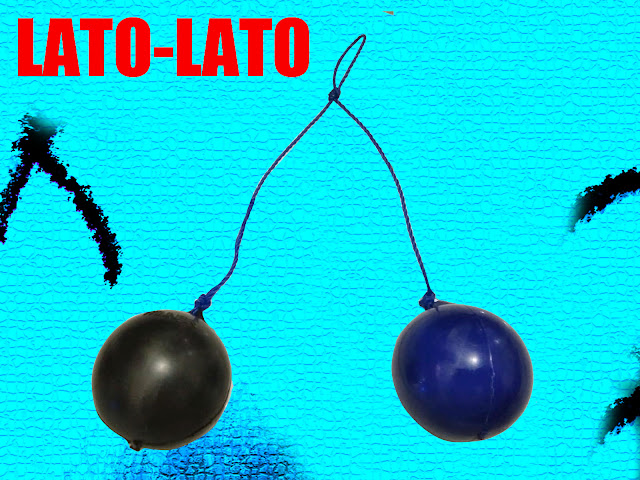Membaca Game-Fictions: Dunia Interaktif yang Mengaburkan Batas Game dan Cerita
Membaca Game-Fictions: Dunia Interaktif yang Mengaburkan Batas Game dan Cerita
Reading game-fictions adalah sebuah genre unik yang memadukan dua dunia: membaca dan bermain. Di satu sisi, kamu menikmati alur cerita layaknya membaca novel, tetapi di sisi lain kamu juga menjadi bagian dari cerita itu sendiri, menentukan jalan cerita dan bahkan akhir kisahnya. Inilah bentuk hiburan digital yang semakin digemari di era teknologi dan literasi modern.
Artikel ini akan mengulas tuntas apa itu reading game-fictions, sejarah dan evolusinya, platform populer, contoh game yang wajib dicoba, serta bagaimana genre ini mempengaruhi cara kita memahami cerita dan bermain.
Apa Itu Reading Game-Fictions?
Reading game-fictions adalah bentuk hiburan interaktif yang memadukan elemen game dan fiksi naratif. Pemain atau pembaca tidak hanya menjadi pengamat pasif, tetapi juga pengambil keputusan yang mempengaruhi jalannya cerita.
Biasanya, game ini memiliki beberapa fitur khas:
- Alur cerita bercabang (branching storyline)
- Pilihan dialog atau tindakan yang memengaruhi hasil cerita
- Penggunaan teks naratif sebagai media utama
- Kadang dilengkapi elemen visual, suara, dan bahkan animasi
Genre ini sering dikenal juga dengan nama interactive fiction, narrative games, atau visual novel dalam konteks Jepang.
Sejarah Singkat Reading Game-Fictions
Reading game-fictions pertama kali populer lewat game teks klasik seperti Zork (1980-an), di mana pemain mengetik perintah seperti “buka pintu” atau “ambil kunci” untuk berinteraksi dengan dunia virtual.
Perkembangan genre ini semakin menarik setelah munculnya Choose Your Own Adventure books di era 90-an, yang memberikan inspirasi terhadap banyak pengembang game untuk menggabungkan pilihan dan cerita dalam media digital.
Di era smartphone dan tablet, reading game-fictions mengalami kebangkitan besar. Platform seperti Choices, Episode, dan Chapters memungkinkan pembaca untuk menikmati fiksi interaktif langsung dari genggaman mereka.
Karakteristik Utama Game-Fictions
Ada beberapa ciri khas yang membedakan game-fictions dari bentuk hiburan lainnya:
- Narasi Kuat: Cerita menjadi elemen utama yang menggerakkan pengalaman.
- Pilihan Interaktif: Pembaca memilih respons, yang bisa mengubah jalan cerita.
- Emosi Terlibat: Banyak game yang mengeksplorasi tema cinta, kehilangan, pengkhianatan, dan keputusan moral.
- Grafik Menarik: Beberapa reading game-fictions memiliki ilustrasi karakter, latar tempat, bahkan efek suara dan animasi.
Platform Populer Reading Game-Fictions
Berikut adalah platform populer yang menyediakan pengalaman reading game-fictions:
- Choices: Stories You Play Menyediakan banyak cerita dengan genre seperti romansa, petualangan, fantasi, dan misteri. Kamu bisa membuat keputusan penting dalam setiap episode.
- Episode: Choose Your Story Lebih cocok untuk remaja dan dewasa muda. Menyediakan cerita-cerita ringan, penuh drama dan gaya hidup.
- Chapters: Interactive Stories Fokus pada kisah cinta dan drama intens, dengan kualitas visual tinggi.
- Twine Platform open-source yang digunakan banyak penulis indie untuk membuat dan membagikan cerita interaktif.
- Inkitt & Galatea Kombinasi cerita teks dan pengalaman audio-visual yang imersif, cocok bagi pembaca modern.
Contoh Game-Fictions Terbaik
Berikut adalah daftar reading game-fictions terbaik yang layak dicoba:
- The Arcana – Kisah romantis dan misterius dengan ilustrasi luar biasa.
- If My Heart Had Wings – Visual novel dengan latar belakang sekolah dan cita-cita.
- Choice of Robots – Game berbasis teks tentang dunia masa depan dan AI.
- Life is Strange – Meskipun visual dan sinematik, intinya tetap berbasis pada pilihan dan narasi.
- Hostage Negotiator – Game menegangkan dengan sistem pilihan mendalam.
Manfaat Membaca Game-Fictions
Selain menyenangkan, ada banyak manfaat yang bisa kamu peroleh dari membaca game-fictions:
- Meningkatkan kemampuan membaca dan memahami narasi
- Melatih pengambilan keputusan dan empati
- Memberi pengalaman literasi digital yang interaktif
- Meningkatkan kosakata dan imajinasi
- Merangsang daya pikir kritis dan logika
Perbedaan dengan Buku Biasa dan Game Tradisional
Reading game-fictions punya posisi unik. Ia tidak sepenuhnya seperti membaca buku biasa karena kamu harus aktif membuat pilihan. Tapi juga tidak seperti game biasa yang lebih menekankan aksi atau strategi. Ia berada di tengah-tengah—menggabungkan kedalaman cerita dengan interaktivitas yang membuat pemain merasa menjadi bagian dari kisah.
Genre Populer dalam Reading Game-Fictions
Genre dalam game-fictions sangat beragam, beberapa di antaranya:
- Romance: Cinta segitiga, hubungan rahasia, pilihan pasangan
- Thriller & Misteri: Menyelidiki kasus pembunuhan atau konspirasi
- Fantasi: Dunia sihir, makhluk mitos, petualangan epik
- Science Fiction: Dunia masa depan, AI, perjalanan waktu
- Drama Kehidupan: Cerita remaja, keluarga, dan sosial
Masa Depan Reading Game-Fictions
Dengan berkembangnya teknologi, reading game-fictions juga makin canggih. Beberapa prediksi tren ke depan:
- Integrasi AI dalam narasi untuk menciptakan cerita yang benar-benar dinamis
- Penggunaan VR/AR untuk membaca dan memainkan cerita secara imersif
- Keterlibatan komunitas untuk membuat cerita bersama
- Monetisasi cerita oleh penulis indie melalui platform digital
Tips Menikmati Reading Game-Fictions
- Pilih genre yang kamu sukai
- Gunakan earphone jika game memiliki suara untuk pengalaman yang lebih imersif
- Baca dengan santai dan pahami setiap pilihan
- Coba berbagai pilihan untuk menjelajahi akhir cerita berbeda
- Bagikan pengalamanmu di forum atau media sosial
Kesimpulan
Reading game-fictions telah menjadi jembatan antara dunia literasi dan hiburan digital. Ia menawarkan pengalaman baru dalam menikmati cerita—interaktif, imersif, dan penuh kejutan. Dengan genre yang semakin luas dan teknologi yang terus berkembang, reading game-fictions bukan hanya alternatif hiburan, tapi juga bentuk seni narasi yang menjanjikan di masa depan.
Jika kamu suka membaca dan juga bermain game, maka reading game-fictions adalah dunia yang wajib kamu coba! Siap memilih takdirmu sendiri dalam kisah yang kamu baca?
Kata Kunci: Reading game-fictions, game interaktif, cerita berbasis pilihan, fiksi digital, interactive fiction
Hashtag:
#ReadingGameFictions
#InteractiveFiction
#CeritaInteraktif
#GameLiterasi
#VisualNovel
#GameBerbasisCerita
#DigitalFiction
#NaratifGame
#CeritaPilihan
#LiterasiDigital



